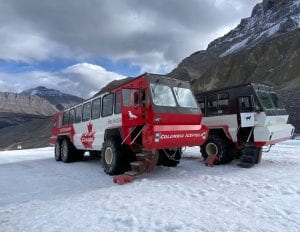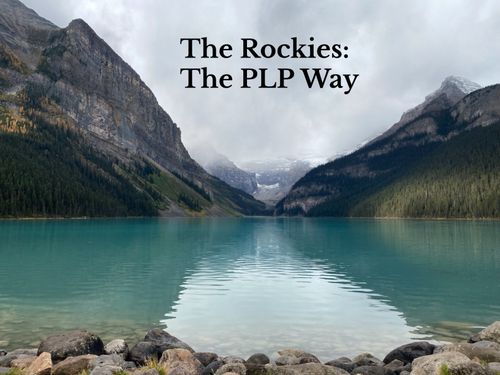As I stood atop the towering peaks of Sulphur Mountain , the crisp mountain air filling my lungs and the unreal views unfolding before my eyes, I couldn’t help but marvel at the profound impact of geography on our lives. My recent eight-day trip to Banff, Alberta, focused on exploring the five themes of geography (Location, Place, Human-Environment Interaction, Movement & Region), and exploring into the rich history of the Canadian Pacific Railway, has left an mark on my understanding of Canada’s western landscape and the unique lifestyle it has fostered.
Our journey took us through a diverse range of locations, each filled with its own stories and important facts that help make the West. From the historic Rogers Pass, where the jagged mountains where railway workers who connected a nation, to the enchanting Cave and Basin, with magical underground hot springs and a pungent sulphur smell.


Yet, it was the breathtaking ascent up The Six Planes of Glaciers hike that truly made me appreciate the beauty of the Canadian Rockies. With every step along the trail, I could feel the earth’s geological history beneath my feet, as the intensity of the hike challenged my body.
During our journey, I came to realize how the geography of the West has shaped not only the land but also the people who call it home. The majestic mountains, deep valleys, and massive waterways have carved a rugged character into the region, one that mirrors the resilience and diversity of those who have settled here. The Canadian Pacific Railway, a symbol of determination and nation-building, served as a testament to the transformative power of geography.
Yet, this trip was not just about the land; it was also a profound lesson in the people who inhabit it. As I interviewed locals for my investigative video I discovered a shared sense of wonder and appreciation for the vast expanse of the Canadian West. It was also a bonding experience for my classmates and I, spending everyday together only strengthened the relationships we made.


Everything we learned along the way was put into a multi touch book. It gave us questions that would guide us to a deeper understanding of the locations, but also give us space to make our own interpretations and connections. It is what holds all of our knowledge of the trip, and it shows our personality while exploring the sights and significance of the West.
As I reflect on those eight unforgettable days, I can’t help but be grateful for the opportunity to explore my own country and learn about its history in such a immersive way. This journey has not only deepened my understanding of the geographical forces that have shaped Canada’s western landscape but has also given me respect for the people who have made it their home. It was more than a trip; it was an expedition of self-discovery, resilience, and learning all about the beauty and history of the Canadian Rockies and the wild, Wild West.

